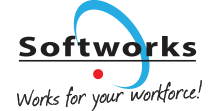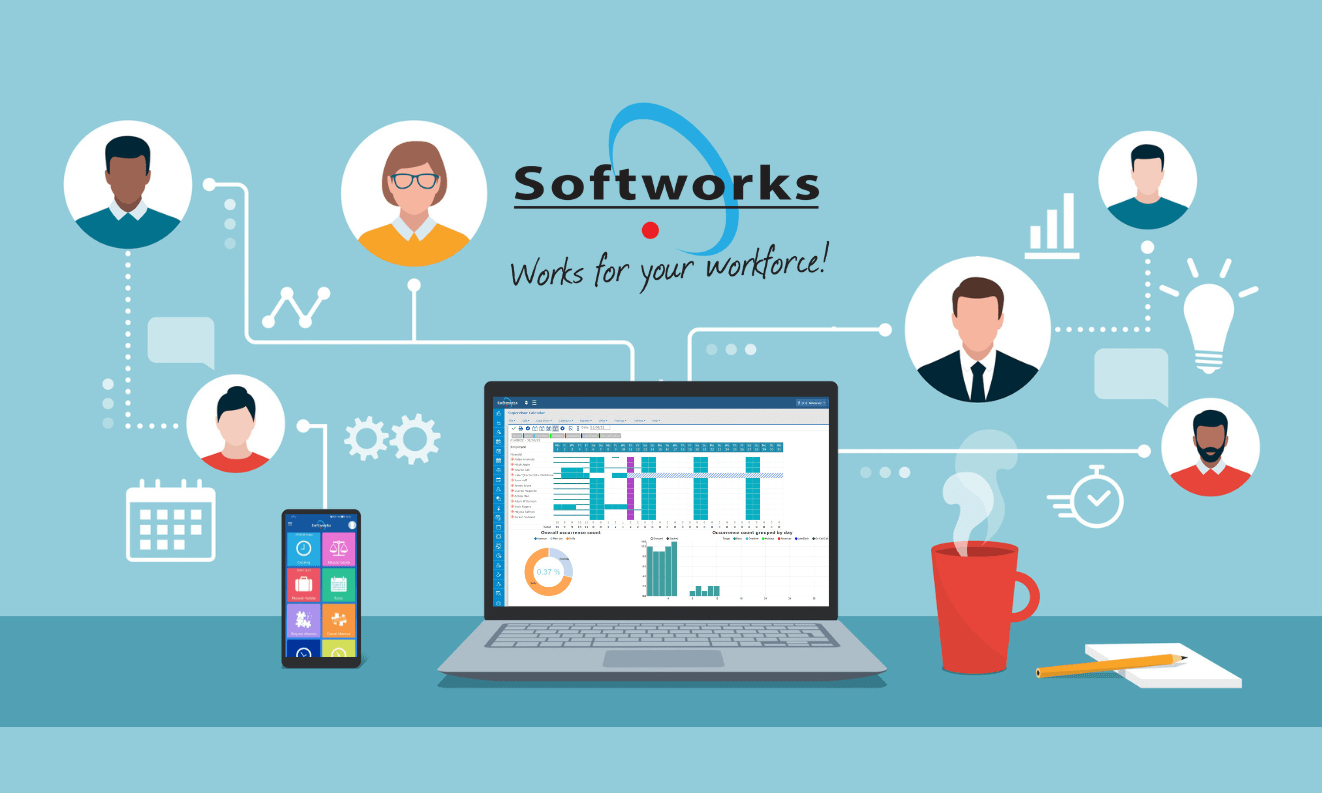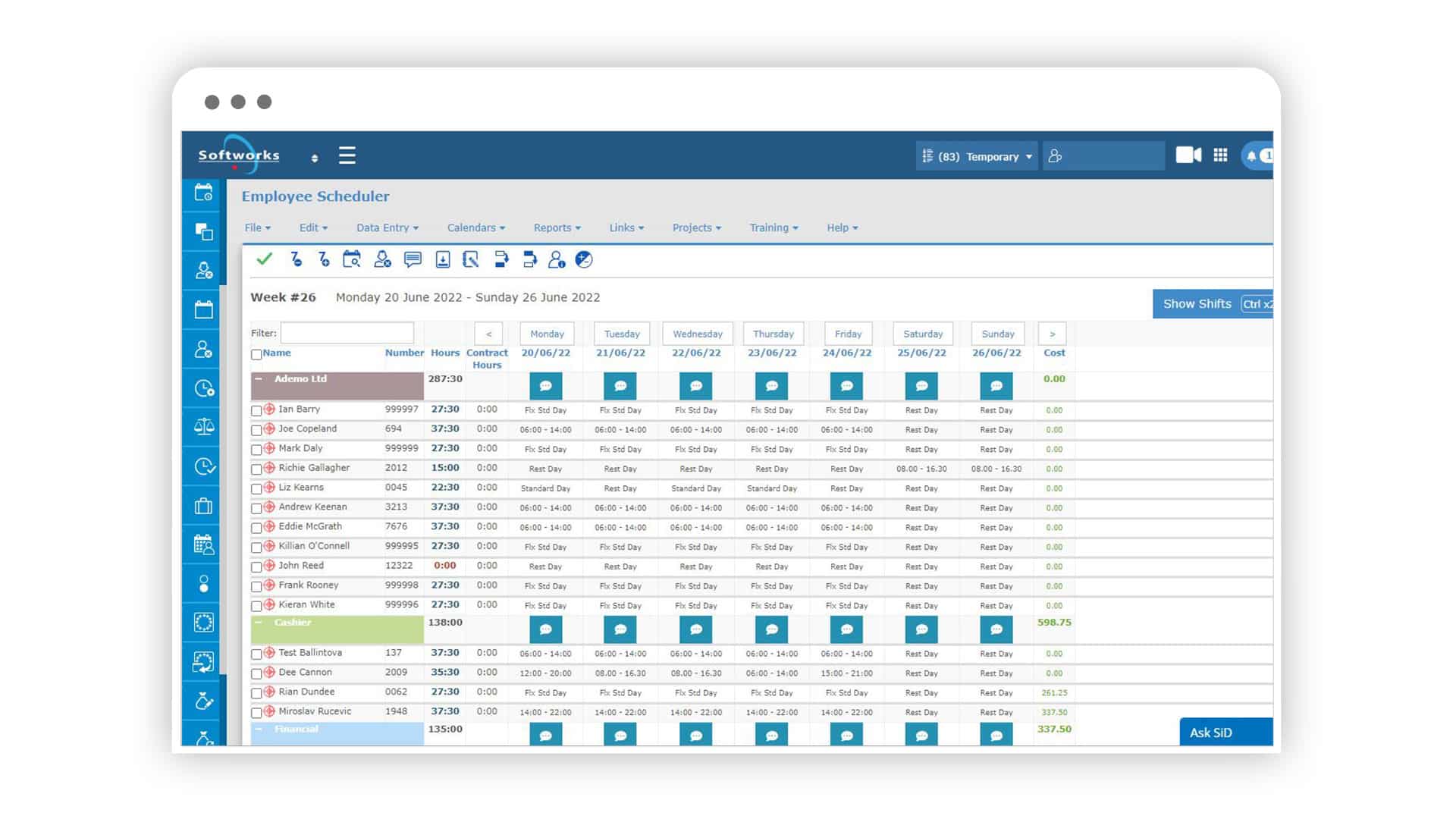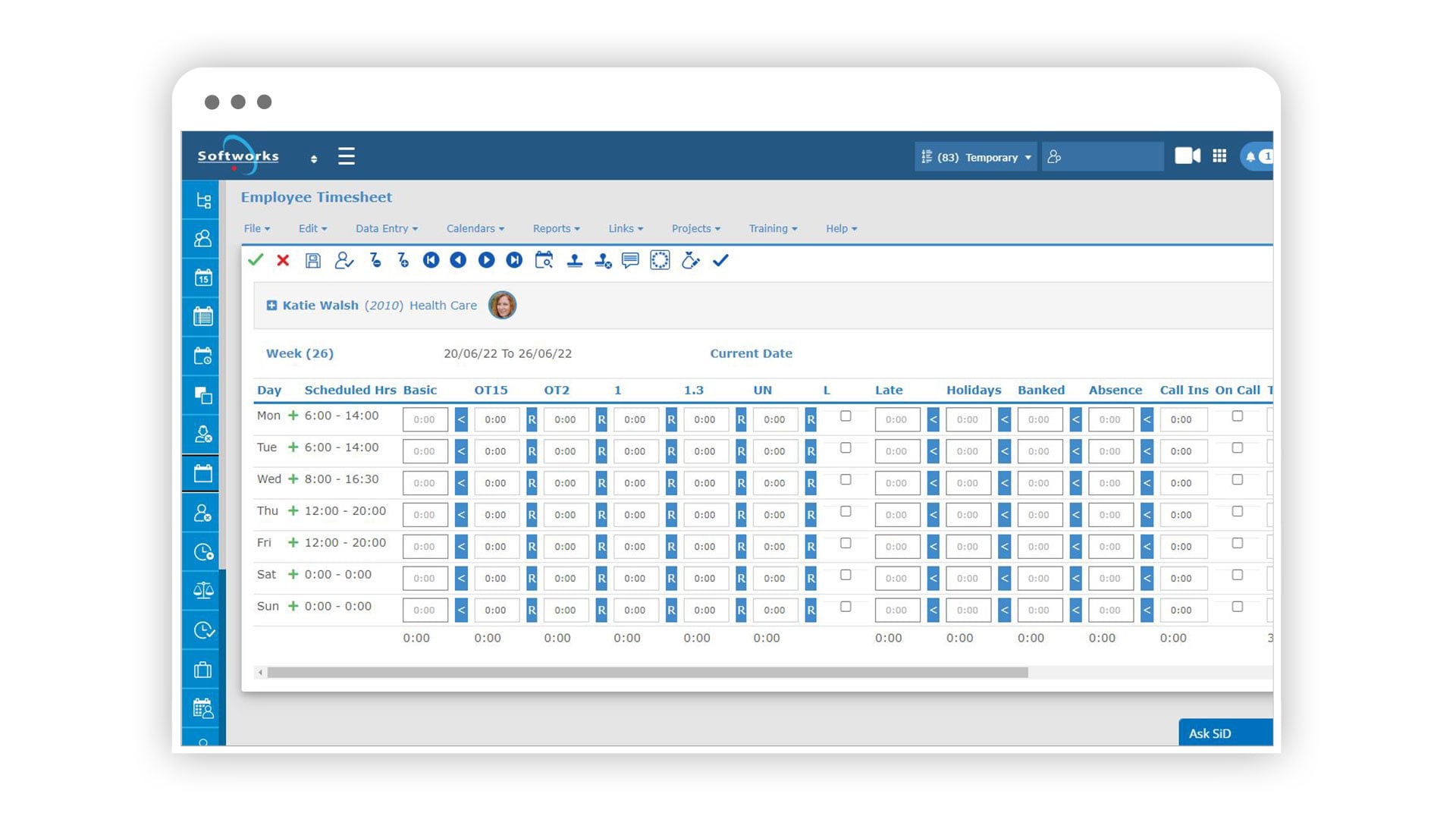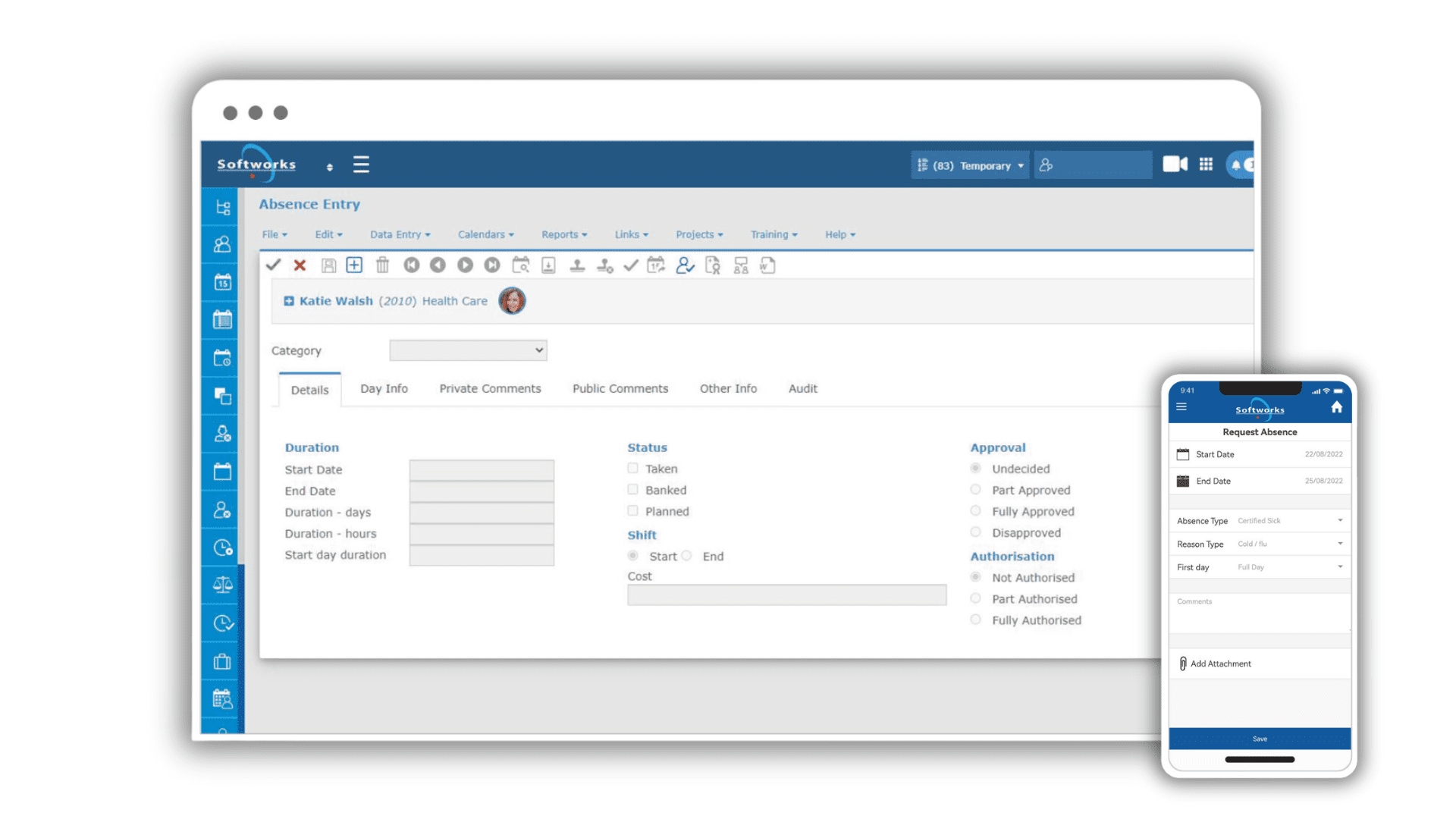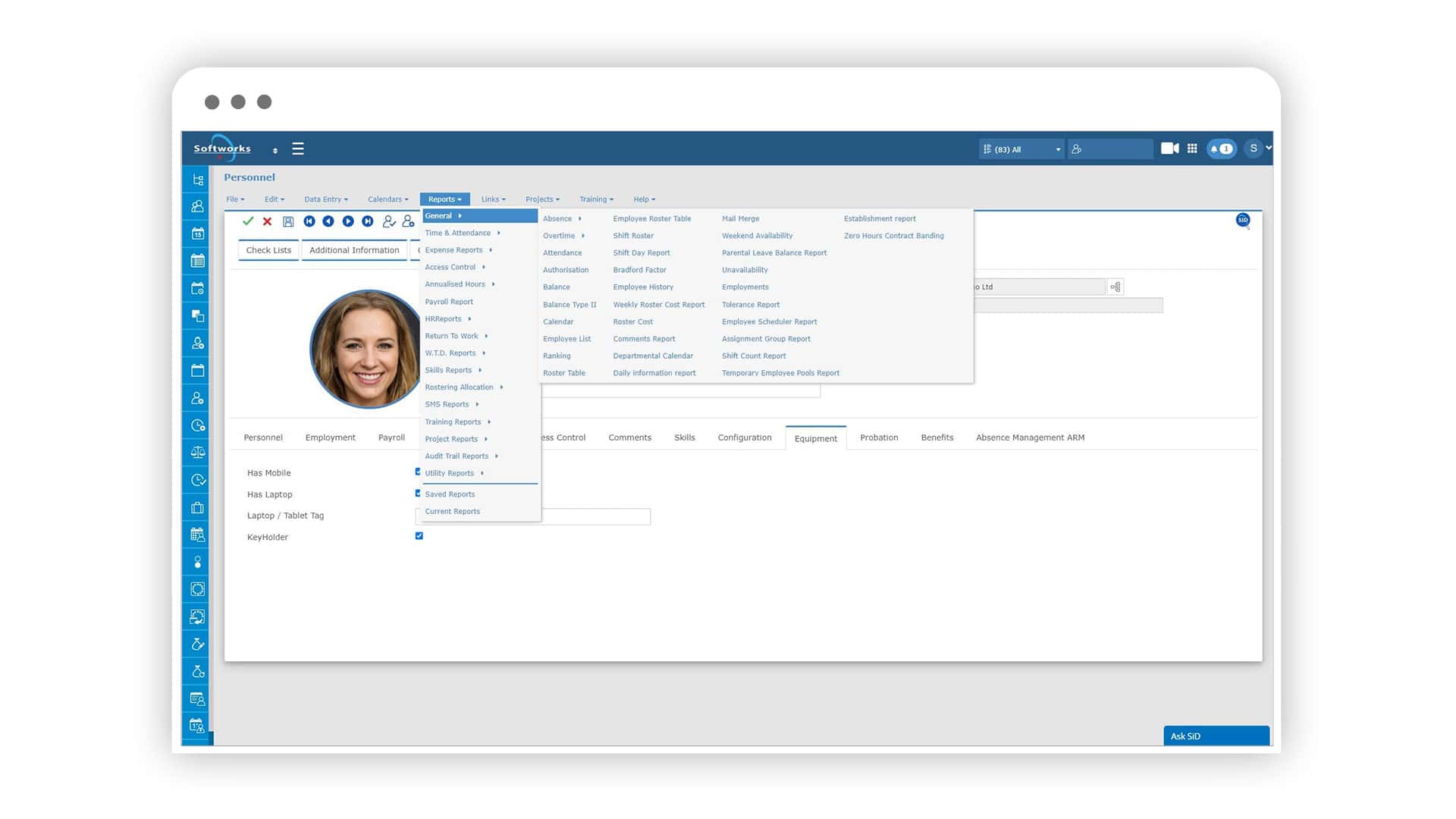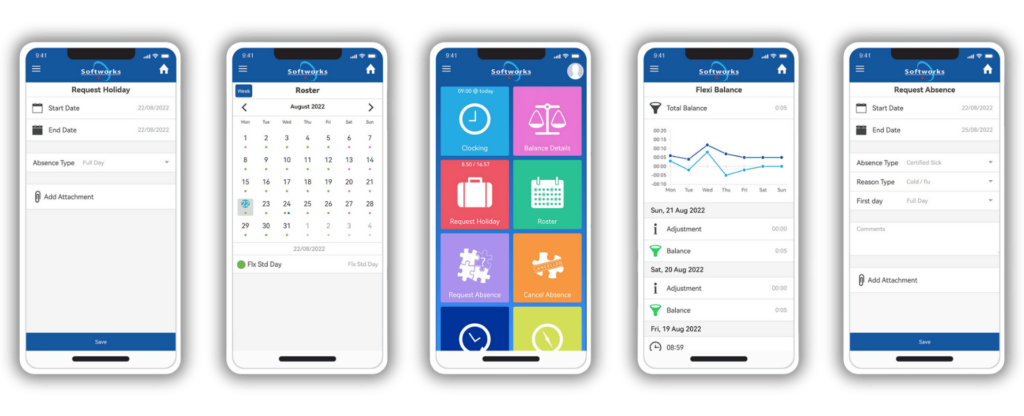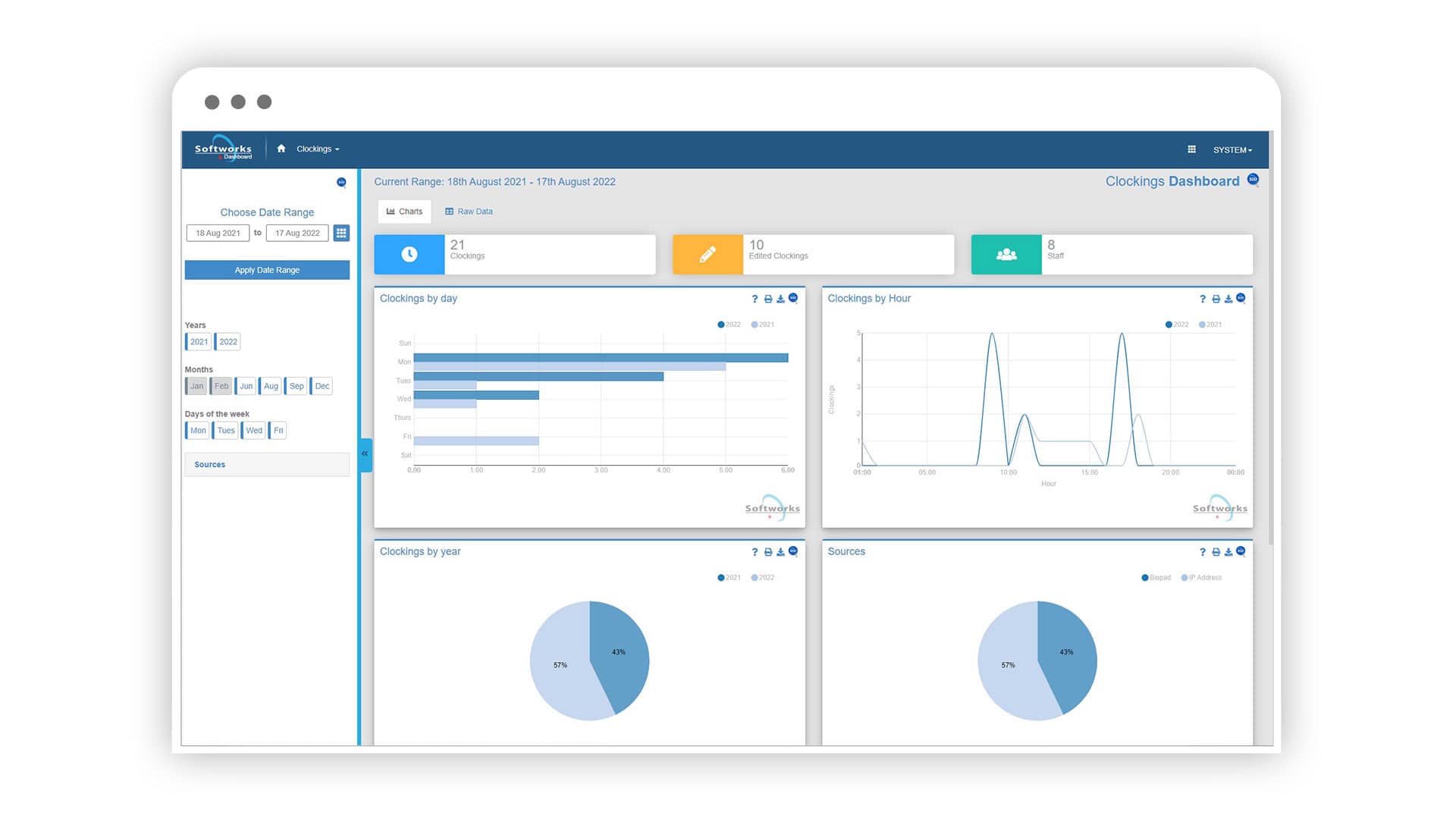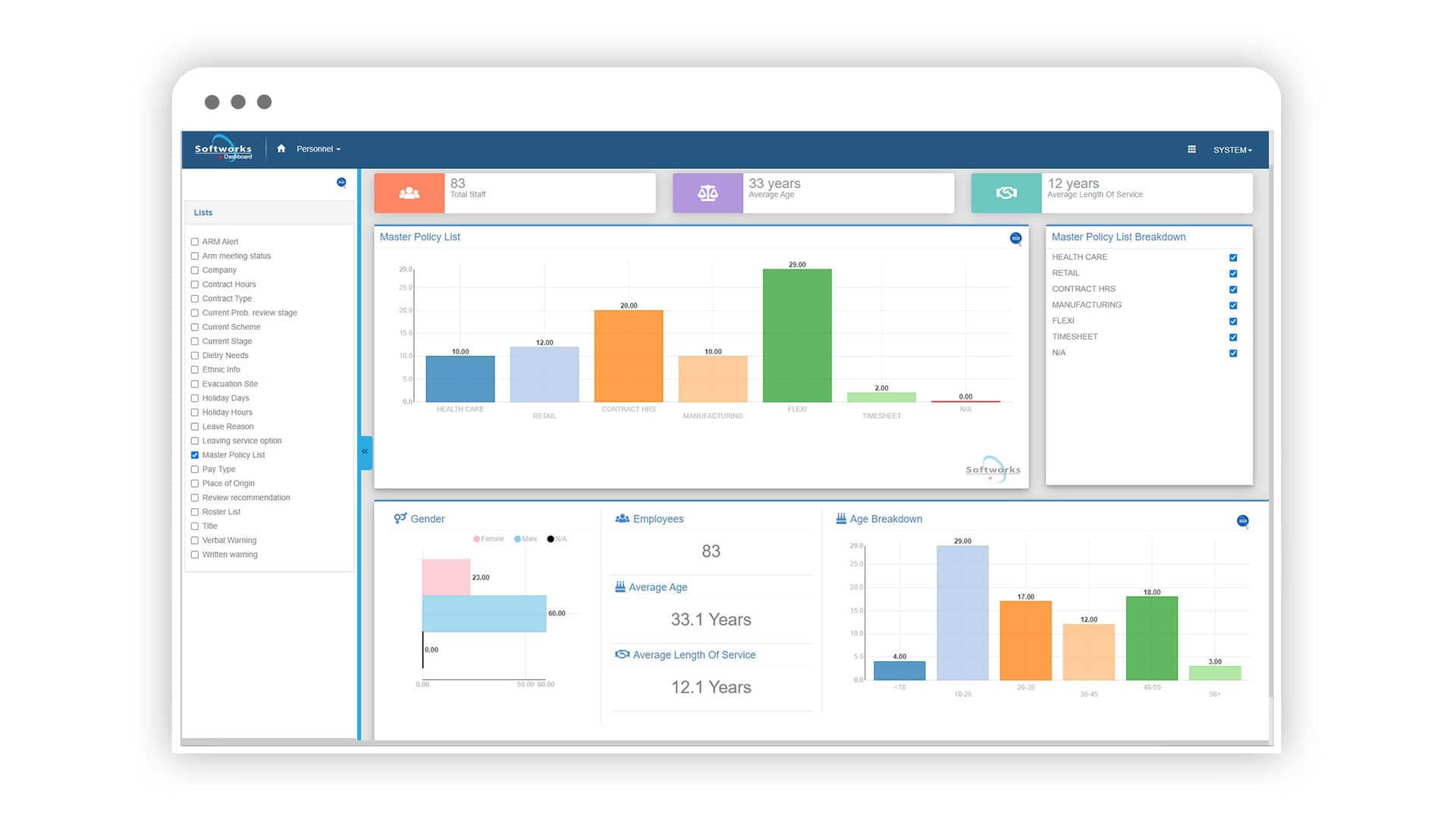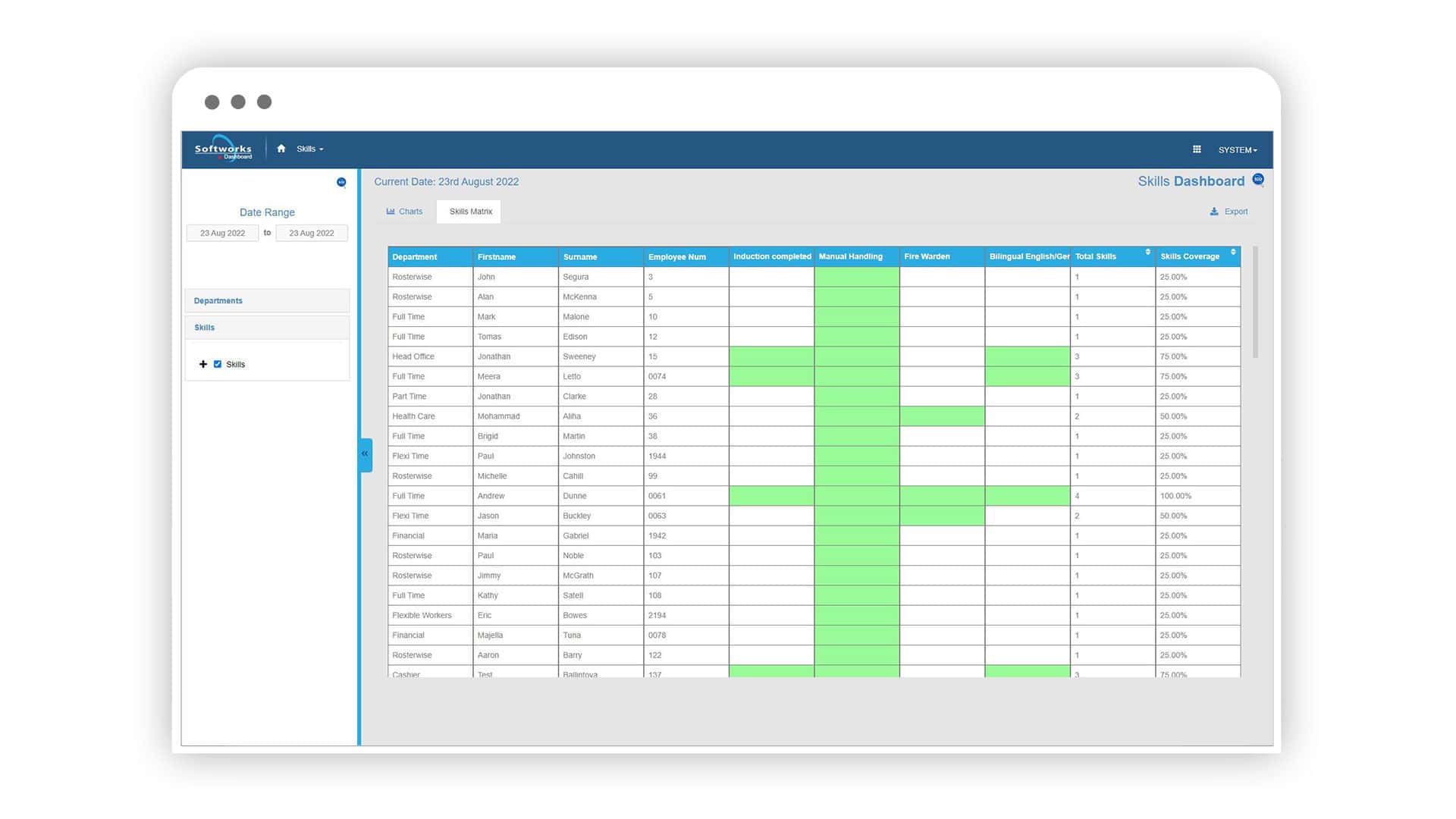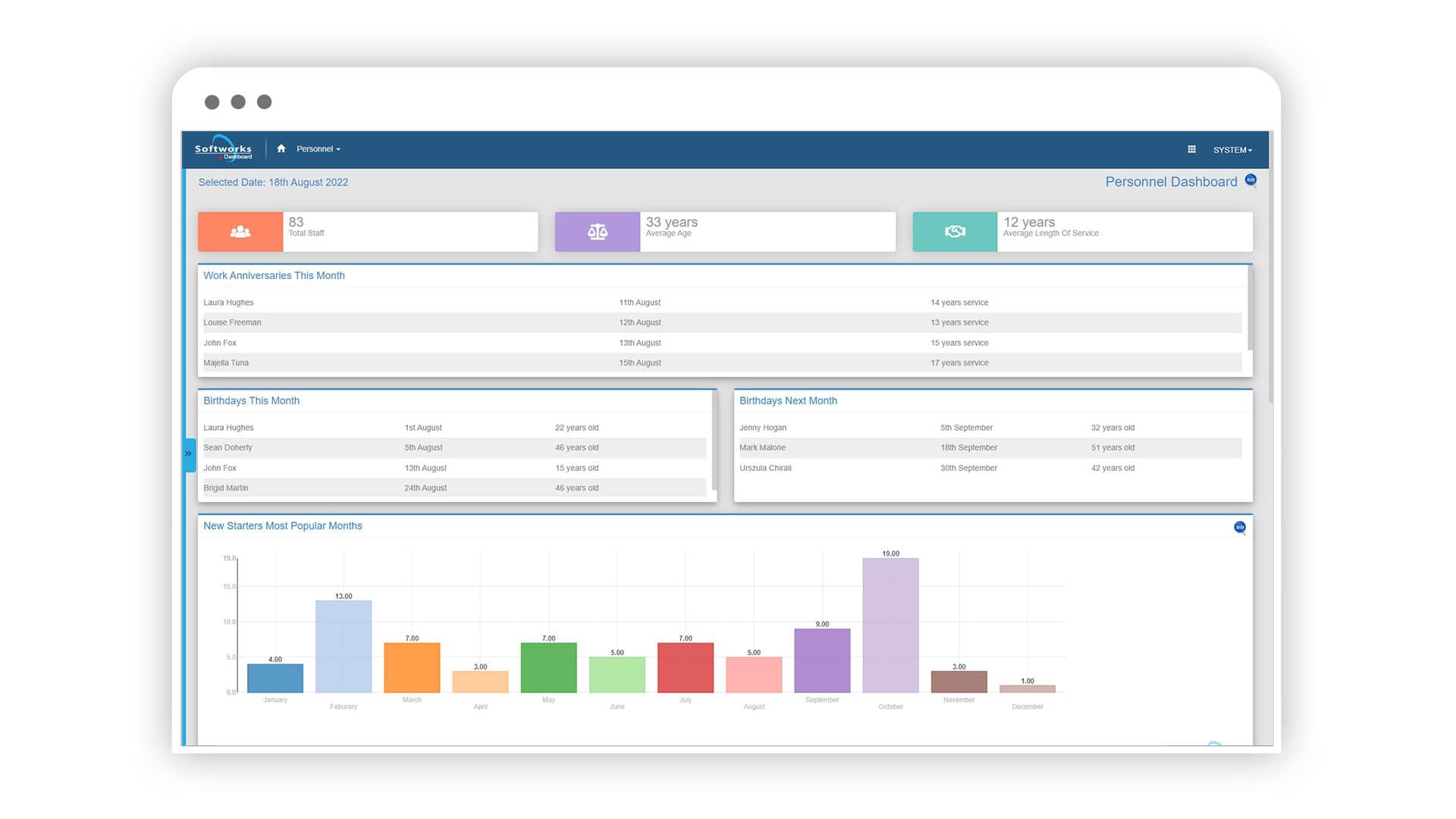In today’s fast-paced and dynamic business landscape, effective workforce management is crucial for organizations to achieve optimal productivity, streamline operations, and stay ahead of the competition. This is where workforce management software comes into play. With its advanced capabilities and intelligent features, workforce management software empowers businesses to efficiently handle their most valuable asset—their workforce.
From scheduling and time tracking to performance management and analytics, this comprehensive guide will provide you with valuable insights into the world of workforce management software, helping you make informed decisions and unlock the full potential of your workforce.
TABLE OF CONTENTS
- What is Workforce Management Software?
- What is the purpose of Workforce Management Software?
- Key Features and Functionality
- Benefits of Workforce Management Software
- Types of Workforce Management Software
- How to choose Workforce Management Software?
- Implementing Workforce Management Software
- Best practices for effective use of Workforce Management Software
- Future Trends in Workforce Management Software
What is Workforce Management Software?
Workforce management software serves as a powerful tool for organizations to optimize their workforce operations and maximize productivity. It encompasses a comprehensive suite of applications and functionalities designed to streamline the processes involved in managing employees, from scheduling and time tracking to performance management and reporting.
Workforce management software is a specialized suite of tools and applications designed to help organizations effectively manage their workforce. It includes features such as employee scheduling, time and attendance tracking, absence management, and employee self-service (ESS).
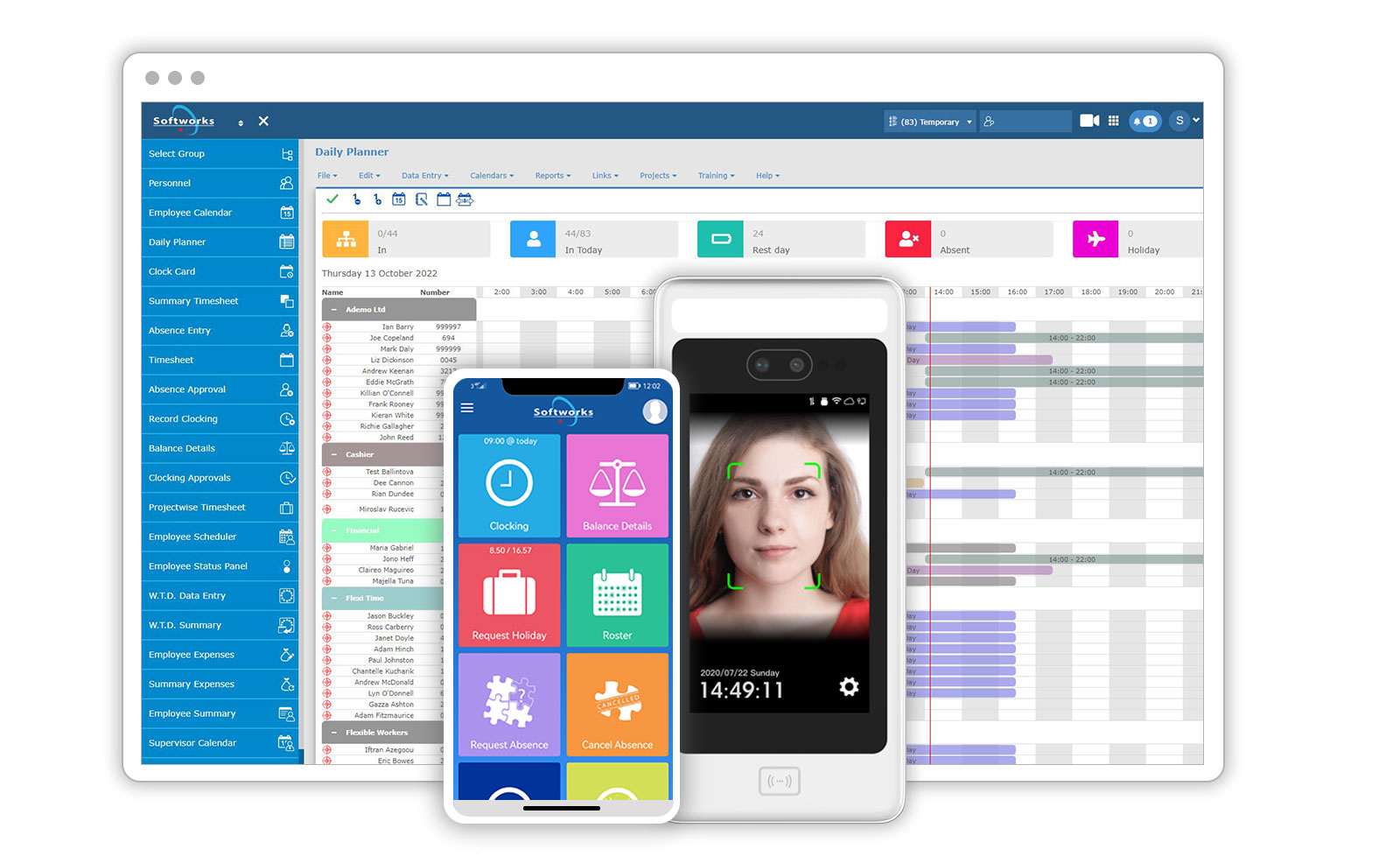
By utilizing automation, data analysis, and streamlined processes, the software enables businesses to optimize workforce utilization, align employee schedules with operational needs, improve productivity, control labor costs, ensure regulatory compliance, and make informed decisions using real-time workforce data.
Essentially, workforce management software acts as a centralized platform that empowers organizations to efficiently plan, monitor, and manage their workforce resources, leading to enhanced operational efficiency and overall success.
What is the purpose of Workforce Management Software?
The purpose of Workforce Management Software is to streamline and optimize the processes involved in managing a company’s workforce. It serves as a centralized platform that brings together various tools and functionalities such as scheduling, time tracking, performance management, and data analytics. The software aims to enable organizations to efficiently allocate and utilize their workforce resources, ensuring the right people are in the right place at the right time.
By automating manual tasks, providing real-time visibility into workforce data, and facilitating data-driven decision-making, Workforce Management Software helps businesses improve productivity, control labor costs, enhance employee engagement, ensure compliance with labor regulations, and ultimately drive operational efficiency and success.
Learn more: What is Softworks Workforce Management Software?
Key Features and Functionality
Workforce management software provides a wide range of essential features and functionalities that empower organizations to effectively manage their workforce. In this section, we will provide an overview of the key features commonly found in workforce management software and delve into the detailed explanation of each feature and its benefits for businesses.
Scheduling and Shift Management
This feature enables businesses to create optimized employee schedules, assign shifts, and manage changes efficiently. It considers factors such as employee availability, skills, and labor requirements.
Benefits include better shift coverage, reduced scheduling conflicts, improved employee satisfaction, and enhanced operational efficiency.
Time and Attendance Tracking
Workforce management software offers robust time and attendance tracking capabilities. It allows employees to clock in and out, tracks hours worked, manages paid time off, and automates time calculations.
This feature streamlines payroll processes, eliminates manual errors, ensures accurate labor cost calculations, and facilitates compliance with labor regulations.
Leave and Absence Management
With this feature, businesses can efficiently manage employee leave requests, track available leave balances, and automate approval processes.
It simplifies leave tracking, ensures fair and consistent leave management, minimizes scheduling conflicts, and improves workforce planning.
HR Management
Workforce management software includes HR management functionality to securely store and manage employee personal information, employment records, skills and training details, payroll data, benefits information, and more.
The feature streamlines HR processes, ensures data privacy and confidentiality, simplifies compliance with data protection regulations, and enables efficient talent management.
Employee Self-Service
Workforce management software offers an Employee Self-Service (ESS) feature that allows employees to access and manage their own information and perform self-service tasks through their mobile or PC. This feature promotes employee autonomy, reduces administrative burdens, and improves employee satisfaction.
Through a secure online portal, employees can view schedules, request time off, update personal information, access pay stubs, and participate in performance evaluations. ESS enhances transparency, streamlines HR processes, and fosters a culture of communication and self-management.
Flexible Working aka. Flexitime
The software includes a Flexible Working (Flexitime) feature that empowers employees to have control over their work schedules. This feature allows employees to adjust their start and end times within predetermined limits, offering flexibility in managing their work hours. Flexitime promotes work-life balance, increases employee satisfaction, and accommodates personal commitments.
With the help of the software, employees can easily submit and track their flexible working requests, while managers can efficiently monitor and approve them. Flexitime enhances employee engagement, productivity, and the overall work environment.
Expense Management
Workforce management software incorporates an Expense Management module that empowers employees to effortlessly manage their business expenses. This feature simplifies the expense reporting process by allowing employees to submit expense claims, upload receipts, and track reimbursement status through a user-friendly self-service portal.
The Expense Management Software streamlines expense approval workflows, enforces policy compliance, and enhances accuracy in expense tracking. By automating expense management, businesses can improve efficiency, reduce paperwork, ensure timely reimbursements, and gain better visibility into expenditure patterns for effective financial planning.
Learning and Skills Management
This feature empowers businesses to efficiently track and manage employee skills, training, qualifications, and learning requirements. It streamlines talent development initiatives, ensures compliance with regulations, and cultivates a culture of continuous learning and growth.
By leveraging this feature, organizations can optimize workforce capabilities, bridge skill gaps, and foster a skilled and adaptable workforce.
Reporting
Workforce management software offers robust reporting capabilities that enable businesses to generate comprehensive reports and analyze workforce data. This feature allows organizations to gain insights into employee productivity, labor costs, scheduling efficiency, and other key performance indicators.
With reporting functionality, businesses can make data-driven decisions, identify trends, and optimize workforce management strategies. Reporting enhances transparency, streamlines decision-making processes, and empowers organizations to drive operational efficiency and success.
Benefits of Workforce Management Software
In addition to its robust set of features and functionalities, workforce management software offers numerous benefits for organizations seeking to optimize their workforce operations. This section will explore the various advantages that businesses can gain by leveraging workforce management software.
Improved Workforce Planning and Scheduling
Workforce management software enables businesses to efficiently plan and schedule their workforce. By considering factors such as employee availability, skills, and labor requirements, organizations can create optimized schedules that align with operational needs. This leads to better shift coverage, reduced scheduling conflicts, and improved workforce efficiency.
Effective workforce planning and scheduling ensure that the right employees are in the right place at the right time, maximizing productivity and customer service.
Enhanced Employee Productivity and Engagement
With workforce management software, businesses can empower employees through features like self-service portals, enabling them to access schedules, request time off, and manage their own information. This autonomy and transparency promote employee engagement, satisfaction, and productivity.
Employees have more control over their schedules, allowing them to better balance work and personal life, resulting in increased morale and commitment to their work.
Cost Savings through Optimized Resource Allocation
Efficient resource allocation is crucial for controlling labor costs. Workforce management software helps businesses accurately forecast staffing needs, match employee schedules to demand, and avoid unnecessary overtime expenses. By optimizing resource allocation, organizations can achieve significant cost savings.
Proactive workforce planning ensures that labor resources are allocated appropriately, preventing overstaffing or understaffing situations that can lead to unnecessary expenses or decreased productivity.
Compliance with Labor Laws and Regulations
Workforce management software ensures compliance with labor laws and regulations by automating time and attendance tracking, leave management, and scheduling processes. This reduces the risk of non-compliance, penalties, and legal issues, providing businesses with peace of mind.
Automated processes and built-in compliance features help organizations stay up-to-date with labor regulations, such as break times, maximum working hours, and overtime requirements, minimizing the risk of violations and associated costs.
Manage Time and Attendance
Workforce management software simplifies time and attendance tracking by automating the process. It eliminates manual errors, improves accuracy, and reduces time theft or buddy punching. This ensures reliable data for payroll calculations and improves overall workforce accountability.
By accurately tracking employee attendance, businesses can effectively manage labor costs, identify patterns of absenteeism, and take necessary actions to improve attendance and punctuality.
Automate Scheduling and Rostering
With workforce management software, businesses can automate the scheduling and rostering process. This streamlines the creation of employee schedules, taking into account availability, skills, and business requirements.
It reduces the time and effort involved in manual scheduling, resulting in more efficient and effective workforce management. Automated scheduling ensures that shifts are properly assigned, reducing errors and conflicts, while also considering employee preferences and qualifications, leading to higher workforce satisfaction and optimized productivity.
Simplify HR Processes
Workforce management software simplifies various HR processes by centralizing employee data, streamlining workflows, and automating routine tasks. It simplifies processes such as onboarding, leave management, performance evaluations, and employee record-keeping. This frees up HR professionals’ time, improves efficiency, and allows them to focus on strategic initiatives.
By automating repetitive tasks and providing a centralized platform for HR activities, businesses can reduce administrative burdens and improve HR service delivery.
Generate Reports and Analytics
Workforce management software provides robust reporting and analytics capabilities. It allows businesses to generate insightful reports on various workforce metrics, such as attendance, productivity, and labor costs. These reports enable data-driven decision-making, identify trends, and highlight areas for improvement in workforce management strategies.
By leveraging real-time data and analytics, businesses can gain valuable insights into their workforce, make informed decisions, and continuously optimize their workforce management processes.
Improve Payroll Accuracy
Workforce management software integrates with payroll systems, ensuring accurate and timely payroll processing. It automates time calculations, leave accruals, and other payroll-related tasks, reducing errors and ensuring employees are paid correctly. This improves payroll accuracy and efficiency, leading to greater employee satisfaction and compliance with payroll regulations.
By eliminating manual data entry and automating payroll calculations, businesses can minimize errors, such as incorrect hours or miscalculated wages, resulting in more accurate payroll and reducing the need for manual payroll adjustments. This not only saves time and resources but also improves employee trust and confidence in the payroll process.
Types of Workforce Management Software
Just as workforce management software offers a comprehensive set of features and functionalities, it also encompasses different types that cater to specific workforce management needs. We’ll explore the main types of workforce management software available in the market. Each type serves a unique purpose, addressing specific challenges faced by organizations in managing their workforce.
Employee Scheduling Software
Employee scheduling software simplifies and automates the process of creating and managing employee schedules. By using advanced algorithms, it optimizes shift assignments based on factors like employee availability, skills, and labor requirements.
The software offers a range of features, including automated shift bidding, shift swapping, and schedule forecasting, which enhances workforce optimization. With these capabilities, organizations can reduce scheduling conflicts, improve shift coverage, and boost overall operational efficiency, resulting in better resource allocation and improved employee satisfaction.
Time and Attendance Tracking Software
Time & attendance tracking software automates the process of accurately recording and managing employee work hours. With integrated clocking systems like face recognition terminals, fingerprint recognition terminals, proximity time clocks, and mobile app clocking, manual timekeeping becomes a thing of the past.
The software automates time calculations, tracks attendance, manages paid time off, and generates comprehensive reports. By doing so, it boosts payroll accuracy, reduces instances of time theft, and enables effective labor cost management. The result is improved operational efficiency and streamlined payroll processes, allowing organizations to allocate resources more effectively and make data-driven decisions.
Leave Management and Absence Tracking Software
Leave and absence management software aims to simplify and streamline the process of managing employee leaves and absences. By providing a centralized platform for employees to request leave and supervisors to approve or deny requests, the software ensures a streamlined workflow.
With automated approval processes, real-time leave tracking, and comprehensive reporting, organizations can ensure fair and consistent leave management. The software also automates the tracking of available leave balances, reducing the chances of errors or discrepancies.
By effectively managing leaves, the software minimizes scheduling conflicts and helps with workforce planning and optimization. This, in turn, contributes to enhanced operational efficiency and increased productivity within the organization.
Learn more: How to Manage Employee Absences with Softworks?
HR Management Software
HR management software acts as a comprehensive solution for securely storing and organizing employee information. It serves as a centralized repository for employee personal details, employment records, skills and training information, payroll data, benefits, and more.
By automating HR processes such as employee onboarding, performance evaluations, and record-keeping, this software streamlines HR operations, ensuring data privacy and compliance with data protection regulations. It enables efficient talent management, facilitates informed decision-making, and boosts productivity by providing easy access to employee information.
Employee Self-Service
Employee Self-Service (ESS) is a feature of workforce management software that empowers employees to access and manage their own information. It offers convenience, promotes autonomy, and enhances communication within the organization.
ESS allows employees to view schedules, request time off, update personal information, access pay stubs, and participate in performance evaluations through a secure online portal. The feature streamlines HR processes, reduces administrative burdens, and improves employee satisfaction.
Learn more: What is Softworks Employee Self-Service App?
Flexible Working aka. Flexitime
Flexible Working aka. Flexitime is a feature offered by workforce management software that enables employees to have greater control over their work schedules. With this feature, employees can adjust their start and end times within predefined limits, allowing for increased flexibility in managing their work hours.
Flexitime promotes work-life balance, enhances employee satisfaction, and accommodates personal commitments. The software facilitates the submission and tracking of flexible working requests, making it easy for employees to manage their schedules. Managers can efficiently monitor and approve these requests, ensuring smooth coordination.
By providing flexibility, the Flexitime feature fosters employee engagement, improves productivity, and contributes to a positive work environment. It empowers employees to achieve better work-life integration while maintaining their effectiveness and commitment to their roles.
Learn more: How to implement Flexitime with Softworks?
Expense Management
The Expense Management module within workforce management software enables employees to seamlessly handle their business expenses. This feature simplifies the process of reporting expenses by providing a user-friendly self-service portal where employees can submit expense claims, upload receipts, and track the status of their reimbursements.
With Expense Management software, businesses can streamline expense approval workflows, ensure compliance with expense policies, and improve accuracy in expense tracking. By automating the expense management process, organizations can enhance efficiency, reduce paperwork, ensure prompt reimbursements, and gain valuable insights into expenditure patterns for effective financial planning.
Overall, Expense Management software empowers employees, increases efficiency, and provides businesses with greater control and visibility over their expenses, leading to improved financial management.
Learning and Skills Management
The Learning and Skills Management feature offered by workforce management software enables businesses to effectively monitor and oversee employee skills, training, qualifications, and learning needs. This feature serves as a centralized platform for talent development initiatives, ensuring compliance with regulations and fostering a culture of continuous learning and growth.
With this feature, organizations can optimize their workforce capabilities by identifying and addressing skill gaps, facilitating targeted training programs, and tracking employee progress. By providing a comprehensive view of employee skills and learning requirements, businesses can strategically align their workforce with organizational goals and cultivate a skilled and adaptable workforce.
Reporting
The Reporting feature of workforce management software provides businesses with powerful capabilities to generate comprehensive reports and analyze crucial workforce data. By leveraging this feature, organizations can gain valuable insights into employee productivity, labor costs, scheduling efficiency, and other key performance indicators.
With robust reporting functionality, businesses can make data-driven decisions and identify trends that impact workforce management strategies. The ability to generate detailed reports allows organizations to track and measure the effectiveness of their workforce management practices, identify areas for improvement, and make informed decisions to optimize operations.
Businesses can identify and address inefficiencies, optimize resource allocation, and align workforce management strategies with business objectives. Ultimately, the Reporting feature empowers organizations to harness the power of data and make informed decisions that positively impact their workforce and overall performance.
How to choose Workforce Management Software?
Choosing the right workforce management software is a critical decision that can significantly impact your organization’s efficiency and productivity. Here are some key factors to consider when selecting workforce management software.
Identify your specific needs
Workforce management software enables businesses to efficiently plan and schedule their workforce. By considering factors such as employee availability, skills, and labor requirements, organizations can create optimized schedules that align with operational needs. This leads to better shift coverage, reduced scheduling conflicts, and improved workforce efficiency.
Effective workforce planning and scheduling ensure that the right employees are in the right place at the right time, maximizing productivity and customer service.
Scalability and flexibility
Ensure that the software you choose can scale with your organization as it grows. Look for flexibility in terms of accommodating changes in workforce size, multiple locations, and evolving business needs. The software should be adaptable to your organization’s changing requirements without significant disruptions.
Integration capabilities
Consider the compatibility of the workforce management software with your existing systems such as HRIS (Human Resources Information System), payroll software, and other relevant applications. Seamless integration can improve data accuracy, streamline processes, and avoid duplication of efforts.
User-friendliness
The software should have an intuitive user interface that is easy to navigate and understand. Employees and managers should be able to quickly learn and utilize the software without extensive training. User-friendly software reduces resistance to adoption and promotes efficient usage across the organization.
Mobile accessibility
In today’s mobile-centric work environment, mobile accessibility is crucial. Look for workforce management software that offers mobile applications or responsive web interfaces, allowing employees and managers to access relevant features and functionalities on-the-go. This enables flexibility and real-time management, especially for remote or field-based employees.
Reporting and analytics
Consider the reporting and analytics capabilities of the software. It should provide comprehensive and customizable reports to track key workforce metrics and performance indicators. Advanced analytics features can provide valuable insights for strategic decision-making and optimizing workforce utilization.
Support and Training
Evaluate the level of support and training provided by the software vendor. Ensure that they offer comprehensive documentation, training materials, and responsive customer support to address any issues or queries that may arise during implementation or usage.
Security and Compliance
Workforce management software deals with sensitive employee data, so robust security measures are essential. Ensure that the software adheres to industry-standard security protocols and data protection regulations. Consider features such as role-based access control, data encryption, and regular software updates to maintain a secure environment.
Cost and ROI
Evaluate the total cost of ownership, including upfront costs, licensing fees, implementation, training, and ongoing maintenance. Consider the potential return on investment (ROI) and the cost-saving benefits the software can provide through improved workforce efficiency, reduced administrative efforts, and minimized compliance risks.
Vendor reputation and reviews
Research the reputation and track record of the software vendor. Look for customer reviews, testimonials, and case studies to gauge their credibility and customer satisfaction. Additionally, consider factors like vendor stability, software updates, and future development plans.
By considering these factors and conducting thorough research, you can choose workforce management software that aligns with your organization’s needs and supports your goals for efficient workforce management.
Implementing Workforce Management Software
Implementing workforce management software requires careful planning and execution to ensure a smooth transition and maximize its benefits. Here are key steps to consider during the implementation process:
1. Planning the implementation process
Develop a detailed implementation plan that outlines key milestones, timelines, and responsibilities. Identify the scope of the implementation, determine the necessary resources, and establish clear objectives. Consider involving key stakeholders and creating a project team to oversee the implementation process.
2. Data migration and system integration
Ensure a seamless transition by migrating relevant data from existing systems to the new workforce management software. Evaluate the compatibility and integration capabilities of the software with your existing systems such as HRIS, payroll, or ERP software. Collaborate with the software vendor or IT professionals to ensure smooth data migration and establish effective system integration.
3. Training and onboarding employees
Provide comprehensive training to employees who will be using the workforce management software. Offer training sessions, workshops, or online tutorials to familiarize employees with the software’s features, functionalities, and best practices. Customize the training to cater to different user roles and ensure employees are comfortable and confident in using the software.
4. Change management strategies
Implement change management strategies to facilitate a smooth transition and overcome any resistance to change. Communicate the benefits of the new software to employees, address any concerns or misconceptions, and involve employees in the decision-making process where appropriate. Encourage feedback and provide support throughout the implementation to alleviate any apprehensions or challenges.
5. Ongoing support and maintenance
Establish mechanisms for ongoing support and maintenance of the workforce management software. This can include access to a dedicated support team, regular software updates, and user forums or knowledge bases. Encourage employees to report any issues or provide feedback to ensure continuous improvement and optimize the software’s performance.
Throughout the implementation process, monitor progress against the defined objectives and adjust as necessary. Regularly communicate updates and milestones to keep employees informed and engaged. By following these steps and investing in a well-planned implementation process, you can successfully integrate workforce management software into your organization and reap its benefits for efficient workforce management.
Best practices for effective use of Workforce Management Software
To achieve effective use of workforce management software, it is important to adopt best practices that align with your organization’s goals and objectives. Here are some key best practices to consider:
Developing accurate forecasting and demand planning
Utilize historical data, industry trends, and predictive analytics to forecast workforce demand accurately. This enables you to align staffing levels with the anticipated workload, avoid under or overstaffing, and optimize resource allocation. Regularly review and refine your forecasting methods to ensure accuracy.
Optimizing scheduling and shift planning
Create efficient and flexible schedules that consider employee availability, skills, and preferences. Leverage workforce management software to automate scheduling, optimize shift allocation, and minimize scheduling conflicts. Consider implementing practices such as self-scheduling or flexible working arrangements to enhance employee satisfaction and work-life balance.
Leveraging data analytics for informed decision-making
Utilize data analytics to gain insights into workforce performance, productivity, and efficiency. Monitor key metrics such as labor costs, absenteeism rates, and employee turnover. Analyze this data to identify trends, patterns, and areas for improvement. Make data-driven decisions to optimize workforce strategies, resource allocation, and productivity.
Promoting employee engagement and work-life balance
Create a positive work environment that promotes employee engagement and work-life balance. Offer flexibility in scheduling, provide opportunities for professional growth and development, and encourage open communication. Recognize and reward employee contributions, and foster a culture of collaboration and inclusivity. Engaged and satisfied employees are more productive and contribute to overall organizational success.
Continuous monitoring and adjustment of workforce strategies
Regularly review and assess your workforce strategies to ensure they align with changing business needs and goals. Monitor the effectiveness of scheduling practices, performance management systems, and training programs. Seek employee feedback and adapt your strategies based on evolving requirements and feedback. Embrace a culture of continuous improvement and agility in workforce management.
By adopting these best practices, organizations can optimize their workforce management processes and drive operational efficiency. Remember to evaluate and adjust your strategies periodically to remain responsive to the dynamic business landscape and evolving employee needs.
Future Trends in Workforce Management Software
The field of workforce management software is constantly evolving, driven by emerging technologies and changing work trends. Here are some future trends that are shaping the landscape of workforce management software:
Emerging technologies and their impact on workforce management
Advancements in technologies such as cloud computing, Internet of Things (IoT), and mobile applications are revolutionizing the way organizations manage their workforce. These technologies enable real-time access to data, seamless collaboration, and remote connectivity, allowing for more agile and efficient workforce management practices.
Automation and AI advancements
Automation is streamlining repetitive and time-consuming tasks in workforce management. Artificial intelligence (AI) is being integrated into software solutions to automate scheduling, improve decision-making, and enhance forecasting accuracy. AI-powered chatbots are also being used to handle employee inquiries and provide self-service support.
Predictive analytics and workforce optimization
Predictive analytics is becoming an integral part of workforce management software, allowing organizations to forecast labor demand, identify potential skill gaps, and optimize workforce allocation. By leveraging data-driven insights, businesses can make proactive decisions to optimize productivity, reduce costs, and align their workforce with business needs.
Flexible and remote work arrangements
The rise of flexible and remote work arrangements is reshaping workforce management practices. Workforce management software is evolving to support these trends by offering features that facilitate remote access, flexible scheduling, and collaboration across geographically dispersed teams. This enables organizations to effectively manage and engage remote workers while maintaining productivity and work-life balance.
As technology continues to advance and work trends evolve, organizations must stay ahead of the curve by adopting modern workforce management software solutions that incorporate these future trends. By leveraging emerging technologies, automation, predictive analytics, and embracing flexible work arrangements, businesses can enhance their workforce management practices, improve employee satisfaction, and drive organizational success in the evolving digital landscape.
Conclusion
Workforce management software is a powerful tool for organizations to optimize their workforce operations and achieve higher productivity. By streamlining processes such as scheduling, time tracking, leave management, and HR functions, this software improves workforce utilization, reduces costs, ensures compliance, and enhances decision-making.
With its comprehensive features and benefits like improved planning, increased engagement, and accurate reporting, workforce management software is a valuable asset for businesses aiming to maximize their workforce’s potential and drive operational success.
When selecting workforce management software, it’s important to consider factors such as scalability, integration capabilities, user-friendliness, mobile accessibility, reporting and analytics, security, and cost. By making an informed decision and choosing the right software, organizations can streamline their workforce management processes and achieve greater efficiency.
Request a free Demo!
Take the first step towards a complete workforce management solution. Talk to us today!
About Tomislav Rucevic
Tomislav Rucevic, an SEO Specialist at Softworks, stands out as more than just a marketer. He’s a fervent writer and influential thinker passionate about Workforce Management, HR, and work-life dynamics. Holding an MBA in Marketing, Tomislav excels in creating content that delves into the complexities of the modern workplace.
His dedication to writing on these topics is highlighted in his MBA thesis, which examined the link between Employee Motivation and Quality Improvement. At Softworks, he expertly merges his SEO skills with his writing prowess, contributing to the company’s digital success and advancing discussions on enhancing work environments and achieving work-life balance.
